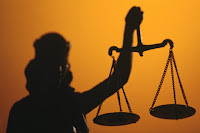Welcome to the October 30, 2009 edition of carnival against child abuse. As the Halloween holiday approaches, many of us will be welcoming costumed children to our door and passing out goodies. As we do so, let's remember that some of these children may be in trouble...we may never know the pain of some of the children that pass by our door. That's why its so important that each and every one of us do what we can, big or small, to help fight child abuse and to be the village of loving, caring, responsible adults that every child deserves (and to hold others in our community accountable to be that as well). Thanks to all who have dedicated their time to presenting ideas in this blog carnival.
Advocacy & Awareness
Surbhi Bhatia presents Will the Slumdogs ever become Millionaires? posted at The Viewspaper » The Viewspaper. The outrageous exploitation of the children of the film does not tell the whole story, there are many like them whose faces are not seen.
Carolyn Friedman presents 50 Things Your Child Should Never Know posted at Nurse Practitioner Schools, which provides a good jumping off point for important discussions with your children.
Patricia Singleton presents Lies Incest Perpretrators Tell Their Victims posted at Spiritual Journey of a Lightworker, describing it as "A list of lies that you may have been told if you grew up with incest in your family."
Pop Tart presents Preventing Sexual Child Abuse posted at MotherhoodMetamorphosis, discussing the book My Body Belongs to Me.
vjack presents Do Good Works Balance Clergy Sexual Abuse? posted at Atheist Revolution which responds to a common excuse for covering up clergy sex abuse.
Marj aka Thriver presents Take a Stand, Raise Your Hand! posted at Survivors Can Thrive!, saying, "I guess, over the years, I've decided that the best way to work to end child abuse--especially child sexual abuse--is to: Stop The Silence...to Silence The Shame...to Break The Cycle. Child abuse perpetuates in our silence and shame. We need to be talking about it! So, in this post, I'm raising my hand; I've got something to say!" And she says it in an inspiring poem.
Colleen Spiro presents How to Help A Survivor of Child Sexual Abuse posted at Surviving by Grace, saying, "Not sure if this is advocacy or awareness .. whet do you think?"
Dr. Kathleen Young presents Minimizing Trauma and the Damage it Does posted at Dr. Kathleen Young: Treating Trauma in Chicago which discusses the importance of using language that does not blame the victim of abuse.
Michael presents "It takes a village to raise a child.” posted at SELF-ISH, a reminder that it takes the work of community to save abused children.
On In The Best Interest, There She Is...Miss America...in Recovery discusses the book by Marilyn van Derbur and how to support a loved one recovering from abuse.
Aftermath
Rabbit White presents The Beauty of Personal Freedom (Or Why I don't talk to my Parents) posted at Rabbit Write, asking "Can you even begin to imagine a world where we drop all abusive people and work on having real honest relationships...?"
Healing & Therapy
Hope presents Past, Present and Future posted at Hope for Trauma, sharing her experiences overcoming abuse and disassociative identity disorder.
In The News
Lisa O'neill presents Mother campaigning for the control of camera phones in nurseries Whereforcare.com posted at Whereforcare.com, discussing an up and coming issue in child welfare.That concludes this edition. Submit your blog article to the next edition of
carnival against child abuse
using our
carnival submission form.
Past posts and future hosts can be found on our
blog carnival index page.
Technorati tags:
carnival against child abuse, blog carnival.

















